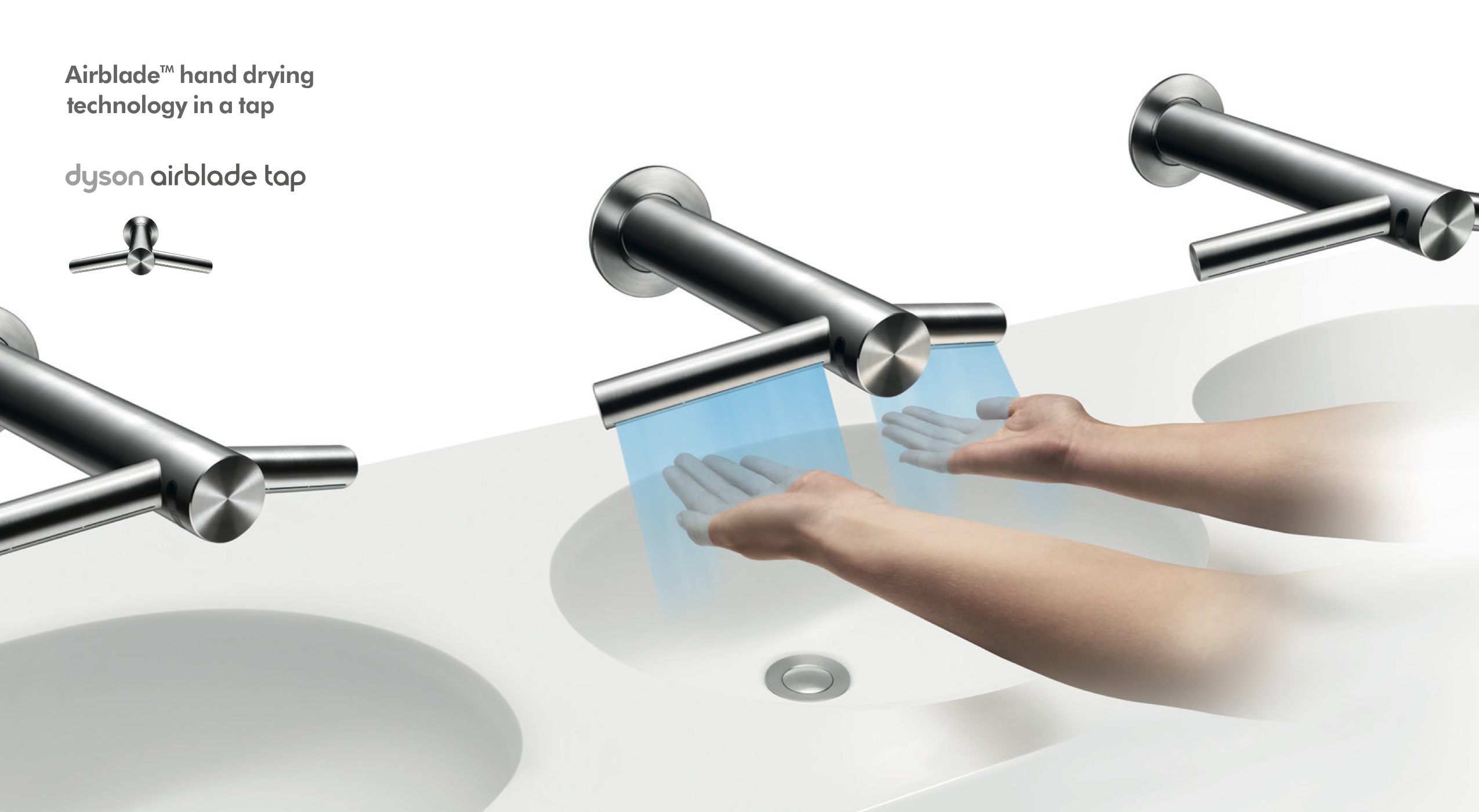Hand Dryers – Not Just Hot Hair

A hand dryer used to be an obnoxiously loud machine which blew hot, weak air at your hands, taking what seemed to be an eternity to fully dry them. Many of us would eventually get fed up of waiting and just wipe our hands on our jeans – defeating the purpose of washing them in the first place.
The technology took another hit in 2008, when a University of Westminster study found that warm hand dryers caused bacteria to increase on the finger pads by an average of 194% and on the palms by 254%.
However, in recent years, new technology has emerged which has improved motors and filters, meaning that many of today’s hand dryers are fast, efficient and most importantly, hygienic.
Dyson’s range of rapid Airblade hand dryers have been in many of Australia’s commercial buildings for a number of years now, and the company recently introduced the Mk2, a revamp of the original, removing 1.1kg of materials from the unit. Two additional models have also been added – the V hand dryer, which offers a more streamlined alternative that can be easily retrofitted, and the Tap hand dryer, which integrates drying technology directly into the sink fitting.
Developed by a team of 125 engineers, Dyson Australia commercial manager John Bryant says the new technology allows dryers to pump air at 690km/h through an aperture of 0.8mm, and uses a hospital-grade HEPA filter, ensuring that hands are dried using cleaner air, not ‘dirty’ air found in the atmosphere.
“These hand dryers essentially work by using sheets of high velocity unheated air that travels through tiny apertures, quickly scraping water from hands like a windscreen wiper, leaving them fully dry in 10 seconds,” he says.
Although the Mk2 is an improvement on the classic Airblade, it is the Tap hand dryer which looks set to have the biggest impact on commercial buildings, as well as discerning residential customers.
Using infrared sensors which monitor hand positions, water is squirted out for cleaning, and when hands are moved slightly outwards, the system blows out high-speed air, drying hands in a matter of seconds, without them having to leave the sink.
“We really see this product flourishing in buildings with minimalistic and upmarket features, as well as facilities which want to eliminate water on the floor,” John explains.
“The Tap dryer also provides a great way to save space on a design, as you don’t have to affix a box to the wall.”
Core to the Airblade technology is the Dyson Digital Motor, which is the result of nearly three years of research and development by the team at Dyson. This power-dense, brushless DC motor uses a bonded magnet encased in a carbon fibre sleeve. Using digital pulse technology, it accelerates from 0-90,000rpm in less than 0.7 seconds, allowing dryers to intake 30L of air per second through its filter.
John says the product’s high speeds are plain to see, but it is the Airblade’s focus on hygiene which poses a significant advantage over more traditional hand dryers.
“Conventional hand-dryers use one column of potentially bacteria-filled bathroom air to evaporate water from hands, after much hand rubbing. Most people simply give up and dry their hands on their clothes instead.”
“Due to the HEPA filters, Dyson Airblade dryers are certified hygienic by leading public health and safety company, NSF international, and are also approved by HACCP for use in food environments,” John says.
He adds that the efficiency of the units is desirable, especially when compared to dryers and paper towels.
“The traditional carbon motors typically used in conventional hand dryers are inefficient and emit carbon, while the heating element within warm air hand dryers increases the reproduction rate of moist bacteria and removes beneficial oils from skin.
“Dyson Airblade hand dryers cost up to 69% less to run compared to traditional warm air hand dryers and, according to recent peer-reviewed university research, create 72% less carbon emissions throughout their life cycle,” John notes.
“We have calculated that in annual running costs, the Dyson Airblade Tap costs an average of $48. This is a significant difference from the $157 of traditional warm air hand dryers and $1,460 cost of paper towels.”
When it comes to installation of the Airblade Tap, a qualified electrician is required to connect it to the mains power, as well as a qualified plumber to route the tap to the water main. A TMV is recommended to ensure consistent temperatures, however it is not included with the Airblade Tap system.
www.dysonairblade.com.au
